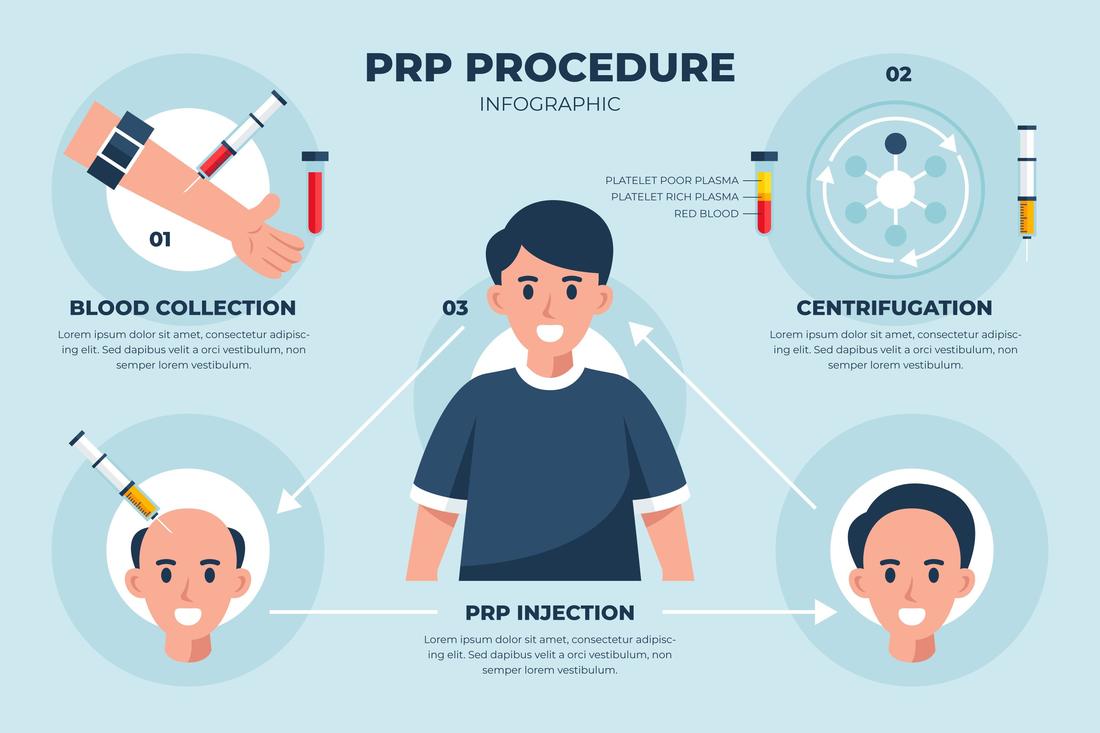
Blood part therapy with platelet rich plasma (PRP/ platelet riche plasma) is a treatment that includes administering a concentrated volume of platelets from the patient's own blood into the scalp. Platelets include growth factors that entice stem cells to congregate in the field. Platelet growth factors and stem cells promote hair regrowth.
Androgenic alopecia is the most common form of hair loss in both men and women, and it is caused by genetically determined androgenic effects on the hair follicles.
Androgenic alopecia is caused by the androgenic hormone dihydrotestosterone (DHT). Androgen receptors are found in hair follicles (male sex hormone). When DHT binds to these receptors, two things happen. The development process is shortened, and the hair follicle itself shrinks, resulting in shorter and thinner hair.
Men will begin to lose their hair as early as puberty. However, this is most likely to occur after the age of 30. First, one may see that the hair is becoming thinner, and then the scalp becomes more noticeable. Even the hairline will rise higher, and there are tabs, indicating "high temples."
People with androgenic alopecia undergo more diffuse hair loss and sometimes total hair loss. Female androgenic alopecia affects about 20-25 percent of all women in their 50s.
PRP can return hair to its original size and reduce hair loss where hair follicles exist. As a result, PRP fits well for women and younger men who have just recently found that their hair has thinned.
Alopecia areata is a condition in which the immune system destroys the hair follicles, resulting in baldness. In that case, PRP therapy was also successful.
Hair loss caused by chemotherapy or radiotherapy is unlikely to respond to PRP treatment.
PRP therapy starts with the gathering of a small volume of blood (usually 1-2 test tubes) from the patient. After that, the platelets are condensed by centrifugation of the blood. Following local anesthesia, platelet-rich plasma is injected into the scalp by multiple small doses. Injecting a significant number of platelets induces dormant hair follicles into an aggressive growth process. It will irritate the scalp for a few hours and induce mild swelling in the following days. Since the platelets are derived from the patient's own blood, there is no chance of hypersensitivity.
During the first injection, hair loss starts to decline after around 2-3 weeks. Within a month, you will get their second treatment. Patients who received PRP treatment had an improvement in hair growth and thickness within 3-6 months. Six months after the second reading, a follow-up visit is planned.
Is PRP treatment suitable for all?
If you have thrombocytopenia (low blood platelet count), chronic liver disease, chemotherapy, or are on blood thinners, the PRP therapy is not for you.
People who smoke a lot and drink a lot are not good candidates for PRP therapy (due to poorer platelet function and blood circulation).
Platelet production is inhibited by anti-inflammatory medications. Such care should be stopped at least 3-4 days before PRP therapy and resumed after one week. You can contact us and learn more about treatment options.





Share Your Opinion, Please